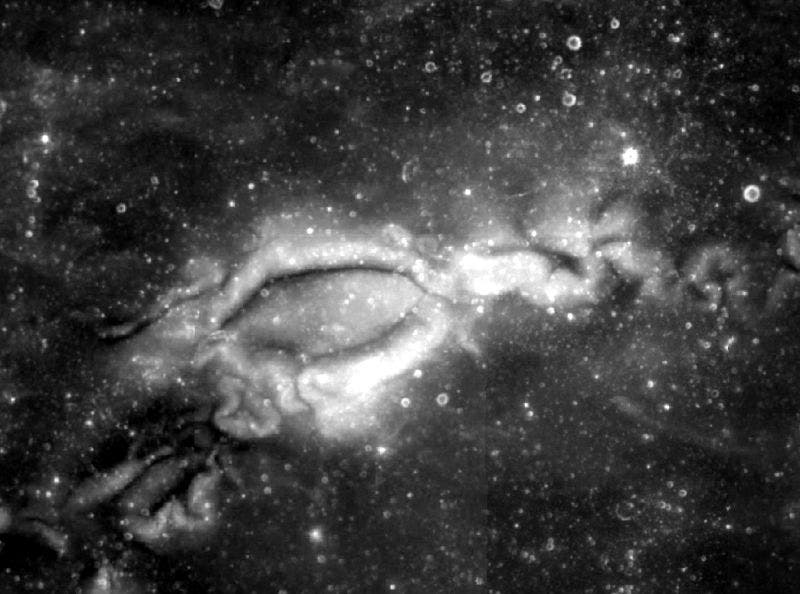The unique swirl patterns may be produced by ancient magma tubes.

Image credits NASA / LRO / WAC science team.
If you prop up a telescope and look at the Moon, you’re likely to see some curious-looking shapes dotting its surface. Many people take them to be craters left over from meteorite impacts, since this is, after all, the Moon.
That would be jumping to conclusions, however, according to a team from the Rutgers University. These bright, undulating shapes are known as ‘lunar swirls’ and up until now, they were somewhat of a mystery.
Cheesy swirls
One of the most striking features of these swirls is that they come hand-in-hand with powerful — but localized — magnetic fields. These swirls, as well as their strange magnetism, have been known for decades. Efforts to map magnetic activity on the Moon (it doesn’t have a magnetic field of its own) during the Apollo 15 and 16 missions were the first to identify these swirls as sources of magnetism back in 1979.
Since then, try as we might, we just couldn’t make heads or tails of the swirls. Each new tidbit of information only seemed to compound the problem further. For example, the swirls are less pronounced and less intricate at higher altitudes. Every swirl has its own magnetic signature, but there are also magnetic fields on the Moon that are completely distinct from swirls. To top it all off, the swirls show geological signs suggesting they’re new formations (they’re much less weathered than the surrounding rocks) — however, they’re definitely not new formations; we’ve seen them up there for decades now.

Image credits NASA.
“The cause of those magnetic fields, and thus of the swirls themselves, had long been a mystery,” said planetary scientist Sonia Tikoo of Rutgers University-New Brunswick.
“To solve it, we had to find out what kind of geological feature could produce these magnetic fields – and why their magnetism is so powerful.”
Computer modeling allowed the team to discover that, in order to fit the observed magnetic signature, each swirl has to form close to or directly above narrow structures that are close to the surface and can create a magnetic field. One structure that would fit this description are lava tubes, or lava dikes — the products of ancient volcanic activity, the team explains.
These tubes are left-overs from the same basalt lava flows which, 3 to 4 billion years ago, created the dark and wide basalt plains seen over the lunar surface. This would explain why those underground formations became magnetized. The magnetic fields generated by the tubes would also deflect incoming solar wind particles, helping to insulate the swirls from weathering effects.
When Moon rock (regolith) is heated to around 600° Celsius (875° Kelvin or 1,112° Fahrenheit) in an environment that lacks oxygen but has a magnetic field, it becomes ‘imprinted’ with this field itself — it becomes magnetized. Heat causes some minerals in the rock to break down, releasing iron, which becomes magnetized across the same direction as the surrounding field.
This process doesn’t usually take place on Earth, because there’s a lot of oxygen here. It can’t take place on the Moon today, because it lost both its lava flows and its magnetic field. However, according to some of the team’s prior research, the lunar magnetic field persisted up to 2 billion years longer. So their hypothesis fits the timeline.
“No one had thought about this reaction in terms of explaining these unusually strong magnetic features on the Moon,” Tikoo said. “This was the final piece in the puzzle of understanding the magnetism that underlies these lunar swirls.”
The team hopes that the next mission to the Moon will study these swirls directly, and confirm or disprove their hypothesis.
The paper “Lunar Swirl Morphology Constrains the Geometry, Magnetization, and Origins of Lunar Magnetic Anomalies” has been published in the Journal of Geophysical Research: Planets.



